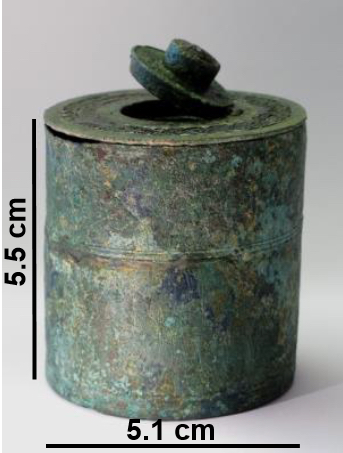Press release: Coal and Arabic gum in Ancient Roman inks
Collaboration, multidisciplinarity and advanced analyses let scientists discover ink composition from the I century AD
Several ancient civilisations used to bury their dead beloved with grave goods. These objects characterised the person’s life or could smooth the deceased’s journey into the afterlife. Thanks to this tradition, today, we can study our past. A multidisciplinary team of scientists determined the original composition of an ancient Roman ink found in a bronze inkwell recovered in a grave of the I century AD. A variety of advanced techniques, based on synchrotron light, let scientists distinguish the original ingredients from the contaminants. Among the authors, the archaeometrist Chiaramaria Stani, collaborator at the Central European Research Infrastructure Consortium (CERIC) and corresponding author of the paper.

The study, published in Scientific Reports – edited by Nature , is characterised by the extensive use of advanced techniques based on synchrotron light. “Spectroscopic analyses based on infrared, ultraviolet, and X-rays let us distinguish the authentic ingredients, coal and Arabic gum, of this ancient Roman ink. At the same time, we excluded all the sample’s contaminations due to the environment and the time”, says Lara Gigli who executed the X-ray diffraction analysis at Elettra Sincrotrone Trieste, Italian partner facility of CERIC. The inkwell, in which the ink was found, was discovered in 1878 in a grave in Este, near Padova (Italy). “Its presence symbolises skills and social practice, suggesting that it could have belonged to a person with a high cultural knowledge”, explains Federica Gonzato, Director of the National Museum Atestino of Este. The importance of this work resides in the rare possibility to directly analyse the ink, avoiding the interference from any kind of writing support, such as papyrus or scroll. “Recent studies like this demonstrate that a multidisciplinary approach by advanced analytical techniques is fundamental to study ancient artefacts and to unveil the secrets of the Cultural Heritage world”, adds Chiaramaria Stani (CERIC).
- ORIGINAL ARTICLE
- PRESS KIT
- CONTACTS: CERIC Press Office
CERIC-ERIC is a multidisciplinary Research Infrastructure open for users in the fields of Materials, Biomaterials and Nanotechnology. With a single entry point to excellent facilities in Europe, it allows structural investigation, analysis and synthesis of materials, using photon, electron, neutron, and ion based techniques.



